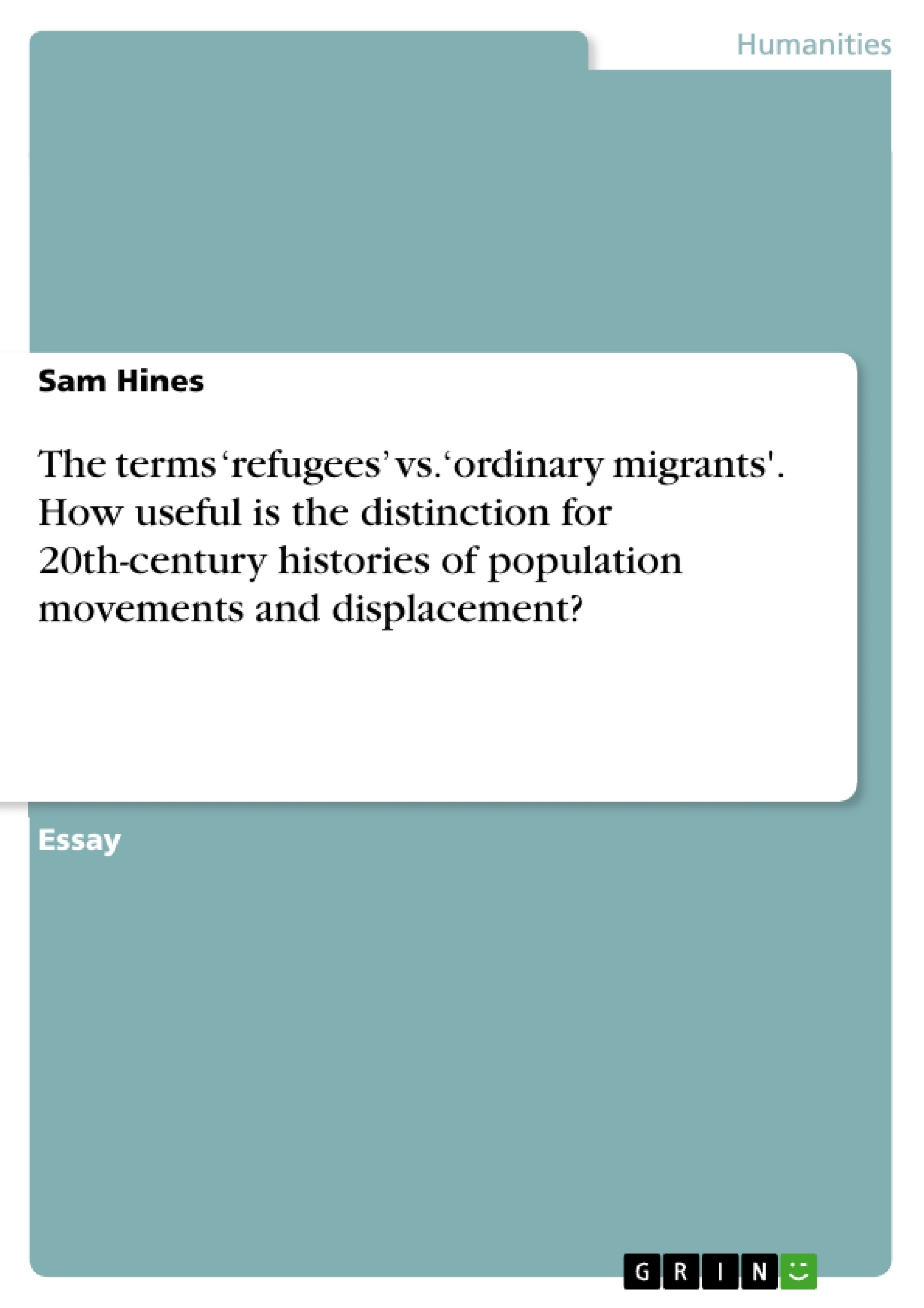This essay will investigate the usefulness of the distinction between ‘refugees’ and ‘ordinary’ migrants for 20th-century histories of population movements and displacement.
The twentieth century was an unprecedented era of mobility as, for a plethora of reasons, both refugees and ‘ordinary’ migrants crossed national and international boundaries. It was the century that witnessed the collapse of empires, two world wars, the emergence of the nation-state and growing internationalisation; all of which provided the conditions for global mass movement.
Though there is a seeming consensus that this period was an ‘age of migration’, the extent to which the terms ‘refugee’ and ‘ordinary migrant’ are useful has been more heavily debated: states and international agencies often insist they are separate categories, despite copious evidence that, in practice, these labels are vague. By first tracing the history of the terms and then entering into a discussion about the usefulness of the distinction with a particular focus on the politicisation of labels, homogenisation of individuals and blurring of the terms, this essay will conclude that the crucial problem with the supposed dichotomy is that, in every form of migration, there is some degree of agency.
Though labelling is necessary for legal grounds, in practice, there is a spectrum of migration, ranging from almost entirely involuntary to voluntary. Thus, for twentieth-century histories of population movement and displacement, the distinction between ‘refugee’ and ‘ordinary’ migrant is an artificial one that is problematic in the academic sphere: the categories are, in fact, significantly blurred and the only tool maintaining the distinction is the label of ‘refugee’ itself.
Inhaltsverzeichnis (Table of Contents)
- How useful for 20th-century histories of population movements and displacement is the distinction between 'refugees' and 'ordinary' migrants?
- The History of the Terms
- The Problem with the Dichotomy
- The Politicisation of Terms
- Homogenisation
Zielsetzung und Themenschwerpunkte (Objectives and Key Themes)
This essay aims to analyze the usefulness of the distinction between "refugees" and "ordinary migrants" in understanding twentieth-century histories of population movements and displacement. It argues that the separation of these two categories is problematic due to the complexity of migration and the politicization of labels.
- The historical development of the terms "refugee" and "ordinary migrant"
- The limitations of the legal definition of a refugee and its artificiality in the context of a spectrum of migration motivations
- The impact of political interests on the categorization of migrants and refugees
- The homogenization of diverse individuals and groups within the categories of "refugee" and "migrant"
- The need for a more nuanced understanding of migration in the academic sphere, considering the spectrum of motivations and complexities of individual experiences.
Zusammenfassung der Kapitel (Chapter Summaries)
- The essay begins by tracing the history of the terms "refugee" and "ordinary migrant," highlighting the evolution of these categories and the emergence of a legal distinction with the 1951 Refugee Convention.
- The author then delves into the limitations of the supposed dichotomy between refugees and migrants, arguing that it is an artificial construct that fails to account for the diverse and overlapping motivations for migration. The essay points out that the Convention's definition of a refugee is too narrow and fails to encompass all forced migrants.
- The essay further examines the politicization of the terms "refugee" and "migrant" by governments who manipulate these labels to serve their own national interests. The essay provides examples of how governments have exploited the ambiguity of the terms to restrict immigration and advance political agendas.
- The author explores the homogenization of individuals within the broad categories of "refugee" and "migrant," highlighting the need for a more nuanced understanding of individual experiences and the diversity within these groups. The essay emphasizes that overlooking individual differences can lead to inaccurate generalizations and harmful policies.
Schlüsselwörter (Keywords)
The essay centers on the key concepts of population movements, displacement, refugees, ordinary migrants, forced migration, voluntary migration, legal definition, politicisation, homogenisation, twentieth-century history, and spectrum of migration. It explores the historical and contemporary complexities of understanding and categorizing individuals within these categories.
- Arbeit zitieren
- Sam Hines (Autor:in), 2019, The terms ‘refugees’ vs. ‘ordinary migrants'. How useful is the distinction for 20th-century histories of population movements and displacement?, München, GRIN Verlag, https://www.grin.com/document/961786



